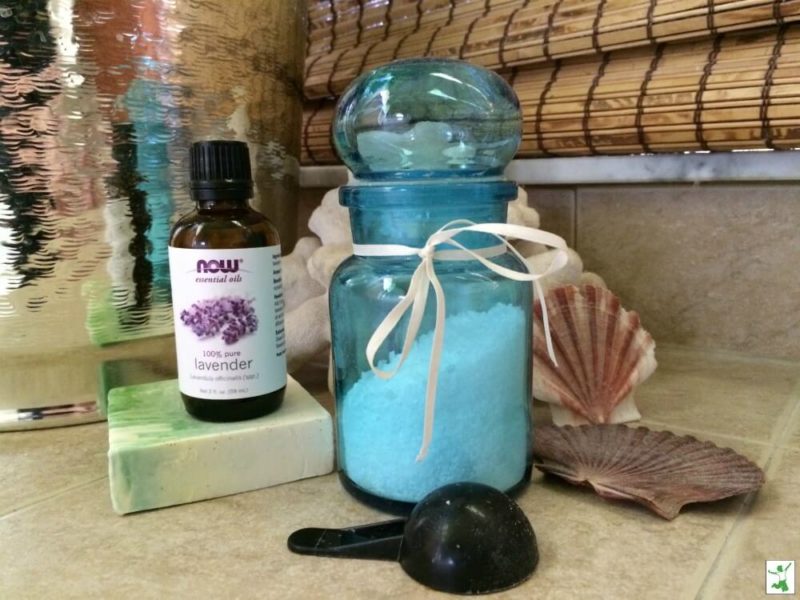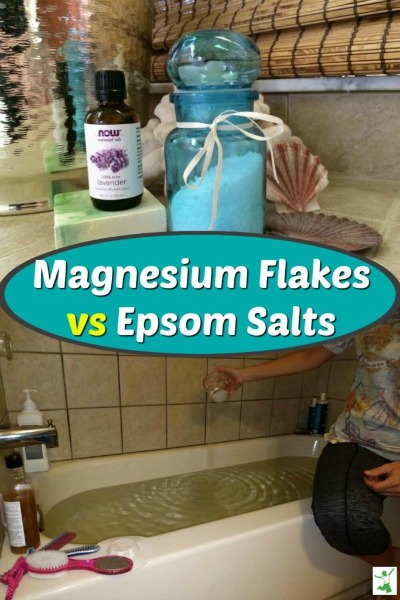
Magnesium flakes are a popular tool for helping to improve one’s nutritional status of this critical mineral. The question is, does it work?
Not only is magnesium deficiency rampant today, even when a person gets enough in the diet (more than two-thirds do not), he/she might not absorb it very well. (1)
This is why even supplementation might not resolve the problem especially for those with gastrointestinal disorders.
This situation makes for a huge risk to health. Magnesium affects so many bodily systems, particularly those of a cardiovascular nature.
The peer-reviewed British Medical Journal (BMJ) warns that subclinical magnesium deficiency (deficiency without observable symptoms) is a public health crisis. It is a major driver behind the epidemic of heart attacks and strokes. Part of the problem is that insufficient magnesium status makes Vitamin D metabolically ineffective. (2,3)
This is where magnesium flakes come in as an easy and affordable dose of prevention.
Magnesium Flakes for Resolving Deficiency
Magnesium chloride flakes are a naturally occurring compound. The chemical formula is MgCl2. Manufacturers make it using seawater or brine.
When MgCl2 flakes are added to a tub full of warm to hot water, elemental magnesium is released when the flakes dissolve. Once in this state, the skin can more readily absorb the magnesium.
Some people seem to absorb magnesium better via the skin than from diet!
This is the main benefit of using magnesium bath flakes as a topically-based remedy.
Hence, if you are low in this mineral or suspect you might be, a regular full body bath or foot soak using magnesium flakes is a very good idea. This brand of bath flakes is recommended by numerous experts in the study of magnesium for this purpose.
Since magnesium tends to make people sleepy, it’s a good idea to only do this before bed or at least a long nap!
How to Use Magnesium Chloride Flakes
When using MgCl2 for external resolution of magnesium deficiency, the soaking water is ideally in the range of 101-103 °F (39 °C).
In addition, it is best to shower and remove any body lotions, crèmes, and moisturizers before a magnesium flakes bath, as these products could form a skin barrier that might hinder the uptake of the magnesium.
3-6 cups of flakes work well for full-body soaks and 1-3 cups for foot soaks.
Each cup of magnesium flakes delivers approximately 15g of elemental magnesium into the soaking water for exposure to the skin.
If you are doing this for the first time, start on the low end and work up.
The rapid absorption of magnesium from a cleansing bath could easily send you to the toilet for many hours afterward because magnesium has a laxative effect.
Start slow!
Soak for 30 minutes or more. According to nutritional pioneer Hazel Parcells, it is not a good idea to top up the bath with more hot water after you’ve already started the clock. It’s not optimal to add cold water during the bath either if it is too hot.
Start with the warmest water you can comfortably stand for the entire bath, rinse with lukewarm water if desired, and then pat dry.
Frequency
Dr. Parcells recommends one restorative bath soak of any kind per day as a maximum.
A realistic goal for most people is to try and do a magnesium bath a few times a week for several months in a row to give your body the best shot at restoring optimal cellular magnesium levels.
However, if you are severely deficient, you may wish to bathe every day for a longer period of time.
Remember to start with small amounts (1 cup per tubful) and work up to a maximum of 6 cups per tubful after several weeks of use.
Tolerance of a rapid infusion of a nutrient varies between individuals. Hence, it is a good idea to discuss your intended bathing regimen with your practitioner before commencing.
Magnesium Baths How-to
Below is a one-minute video that shows you how to enjoy the benefits of improved magnesium status through magnesium flakes baths.
Magnesium Bath Flakes vs Epsom Salts
Regular Epsom salt baths are another excellent way to resolve magnesium deficiency.
Manufacturers of magnesium flakes will tell you that you need to use more Epsom salt (magnesium sulfate) as it excretes more quickly from the body compared to magnesium chloride flakes.
However, this appears to be true only if you are supplementing with magnesium chloride or magnesium sulfate orally.
When getting magnesium topically, the elemental magnesium that is released in a tubful of Epsom salt or magnesium flakes would be identical.
So, whether you soak in magnesium flakes or Epsom salts is a personal decision only. Try them both and choose based on what you prefer and what you experience. Some say that a soak in magnesium flakes is more intense. Personally, I don’t feel much difference.
A secondary benefit to soaking in a bathtub of Epsom salts is the elemental sulfur. The body also absorbs this mineral very well topically. Sulfur deficiency is another rampant deficiency in modern society.
Hence, an Epsom salt bath gives you a “two-for-one” nutritional punch. It helps resolve magnesium AND sulfur deficiency at the same time.
On the other hand, the chloride provided in a magnesium flakes bath is absorbed transdermally to help produce gastric acid and to stimulate starch-digesting enzymes.
Transdermal?
Magnesium oil is another option for benefiting from magnesium chloride transdermally.
Generally, magnesium chloride can be applied directly to the skin as a spray, gel, or lotion.
6 sprays of high-quality magnesium oil deliver approximately 100mg of elemental magnesium on the skin.
By comparison, one teaspoon of magnesium chloride gel contains approximately 490 mg of elemental magnesium, and the same amount of magnesium chloride lotion contains about 185 mg elemental magnesium.
Research suggests applying magnesium chloride directly to the skin is effective for resolving magnesium deficiency. However, for those with sensitive skin, magnesium chloride oil can cause irritation, itching, burning or even a rash. Slight tingling after application is normal.
Since the majority of the magnesium is absorbed within about 30 minutes, showering after this period of time works to prevent skin and residue issues for some people. (4)
If the magnesium oil proves problematic, magnesium gel or lotion that combines skin emollients like aloe vera with the therapeutic magnesium chloride may work better.
However, if applying directly to the skin in any form produces discomfort, it is best to stick with the magnesium bath flakes instead.
Note that some sources find that the improvement of serum magnesium levels from transdermal therapy to be inconclusive and in need of further study. (5)
You be the judge! Remember that many people who are magnesium deficient are asymptomatic, so blood tests would be the only way to concretely ensure that you are improving magnesium status either via diet, supplementation, or skin-based therapies.
Where to Buy Magnesium Flakes
My most trusted source for magnesium chloride flakes, oil, gel, and lotions is the same brand recommended by Dr. Mark Sircus, Ac. OMD, author of Transdermal Magnesium Therapy and Daniel Reid, author of The Tao of Health and The Tao of Detox.
According to these experts, Ancient Minerals delivers the fastest, most potent therapeutic benefits and is tested free of any toxic contaminant.

References
(1) How Many Americans are Magnesium Deficient?
(2) Subclinical magnesium deficiency: a principal driver of cardiovascular disease and a public health crisis
(3) Low magnesium levels make Vitamin D ineffective
(4) Magnesium Oil: Does it Really Improve Magnesium Absorption?
(5) Myth or Reality? Transdermal Magnesium








I combine magnesium chloride flakes with epsom salt in my bath to get the benefits of both.
Hi, can someone explain these numbers please?
One foot bath uses 1 cup of mag flakes, equaling 15g of elemental magnesium into the body.
Whereas that same cup of mag flakes makes how much mag oil?
Thanks
What’s the most economical and efficient method of delivery
6 sprays of high-quality magnesium oil deliver approximately 100mg of elemental magnesium on the skin.
Each cup of magnesium flakes delivers approximately 15g of elemental magnesium into the soaking water for exposure to the skin.
Thanks Sarah. How do you think Dead Sea Salts compare?
Dead sea salts have a different composition to magnesium flakes or epsom salts. They are closer to regular sea salt.
These flakes come from a clean underground sea in Europe:
He is not allowed to tell that you can eat them. Only eat less than 1/2 tsp, like a few flakes, or you get diarrhea. On the skin, take as much as you want
Denyse — has your daughter tested as low in magnesium? Magnesium helps calcium and potassium move in and out of your cells. If she is not deficient in magnesium giving her supplements may cause an imbalance in calcium and potassium. You don’t want to mess up your electrolyte (sodium, magnesium, potassium, calcium) balance. There are a few ways to do this. Drink too much water. Take too many magnesium, potassium, sodium or calcium supplements. Google it. If your daughter gets muscle cramps, for goodness sake’s, don’t keep giving her magnesium.
Not a doctor, not a scientist. Just google it Mam.
My daughter gets muscle cramps from all forms of magnesium, how can she get magnesium into her body. She has tried all supplements and even the magnesium oil. They all give her severe muscle cramps. What would cause this?